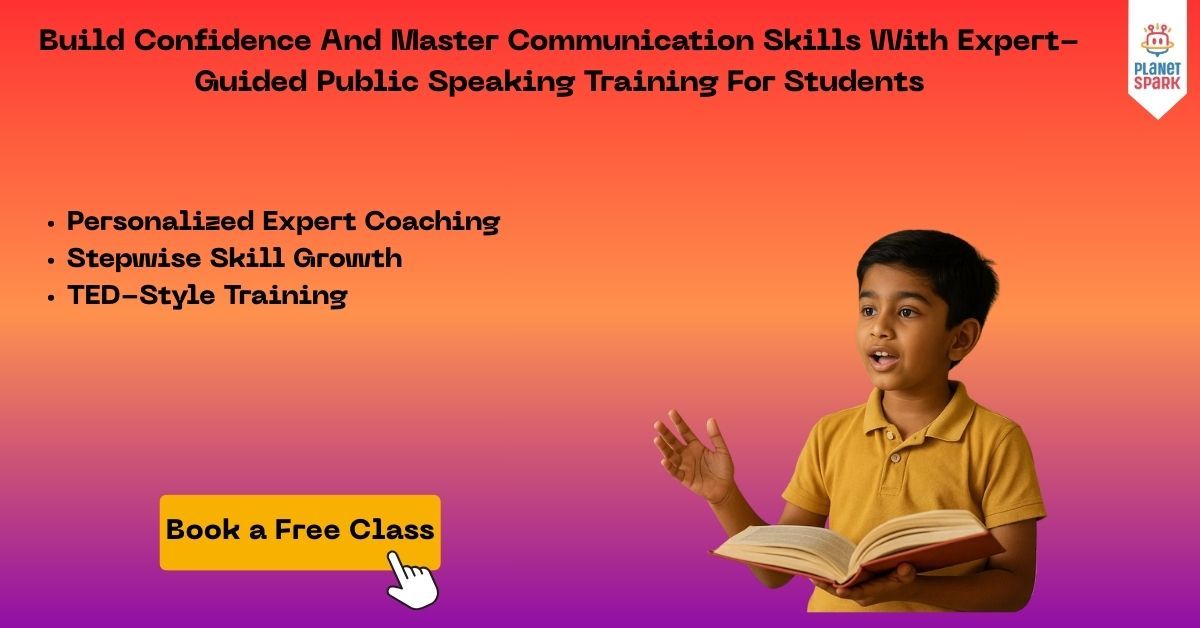The Science Behind a Confident Body Language Explained

Table of Contents
- The Science Behind a Confident Body Language
- What Is Confident Body Language?
- Key Elements of Confident Body Language
- Common Mistakes That Undermine Confidence
- How to Develop Confident Body Language
- The Social Impact of Body Language
- Body Language and Cultural Differences
- How Body Language Shapes First Impressions
- The Connection Between Body Language and Emotions
- The Role of Mirror Neurons in Nonverbal Communication
- How Body Language Affects Your Voice and Speech
- The Link Between Confidence and Open Body Posture
- Signs of True Confidence vs. Fake Confidence
- How Leaders Use Body Language to Influence Others
- The Impact of Digital Communication on Body Language
- How to Read Other People’s Body Language Accurately
- Why Practicing Body Language in Daily Life Matters
- How Stress and Anxiety Affect Your Body Language
- Body Language Tips for Public Speaking Success
- The Role of Body Language in Building Relationships
- How Body Language Shapes Your Personality Over Time
- The Neuroscience of Posture and Confidence
- Nonverbal Signals That Instantly Boost Credibility
- How Your Environment Affects Body Language
- The Link Between Body Awareness and Emotional Intelligence
- How to Use Body Language in Job Interviews
- The Hidden Power of Micro-Expressions
- How Body Language Impacts Leadership Perception
- Why Choose PlanetSpark?
- Conclusion
Body language is one of the most powerful forms of nonverbal communication, it often speaks before you even say a word. From the way you stand to how you make eye contact, your physical cues reveal your confidence, emotions, and attitude. A confident body language doesn’t just make you appear self-assured; it actually helps you feel more confident too.
Studies in psychology and neuroscience show that posture and gestures influence not only how others perceive you but also how your brain perceives itself. Whether you’re giving a presentation, attending an interview, or simply having a conversation, the science behind confident body language plays a vital role in shaping impressions and outcomes. Understanding these signals allows you to align your internal mindset with your external presence, creating an authentic sense of confidence that inspires trust and respect.
The Science Behind a Confident Body Language
Body language is deeply rooted in psychology and biology. When you stand tall and expand your posture, your body increases testosterone, a hormone linked to confidence and dominance, while reducing cortisol, the stress hormone. This simple change in stance can instantly make you feel more powerful and calm.
The brain also interprets your own body language cues. If you slouch or avoid eye contact, your mind reinforces insecurity; when you hold your head high and move purposefully, it triggers feelings of control and self-worth. This mind-body feedback loop explains why acting confident can create confidence, it’s a scientifically supported principle used by leaders, speakers, and performers worldwide.
What Is Confident Body Language?
Confident body language is the art of expressing self-assurance through nonverbal signals, your posture, eye contact, facial expressions, and gestures. It’s the quiet power that speaks louder than words, helping you project calmness, credibility, and control in any situation. True confidence isn’t about looking dominant or intimidating; it’s about appearing comfortable in your own skin.
A genuine display of confidence is natural and effortless, standing tall, maintaining an open posture, and using gestures that match your emotions. In contrast, forced gestures like exaggerated movements or stiff postures often signal nervousness or pretense. The difference lies in alignment: when your body language matches your inner state, others perceive you as trustworthy and authentic.

Key Elements of Confident Body Language
To master confident body language, focus on these essential components:
Posture: Keep your shoulders relaxed, spine straight, and feet firmly grounded.
Eye Contact: Maintain steady but natural eye contact to convey sincerity and engagement.
Facial Expressions: Smile genuinely, it projects warmth and approachability.
Hand Gestures: Use open, controlled gestures to emphasize points without overdoing them.
Voice Tone and Pace: A calm, steady tone with measured pauses signals clarity and confidence.
Each of these elements builds trust, presence, and influence, whether you’re speaking on stage or in a one-on-one conversation.
Common Mistakes That Undermine Confidence
Even subtle body language errors can weaken your presence. Avoid these common mistakes:
Slouching or crossing arms: This appears defensive or uninterested.
Avoiding eye contact: Signals nervousness or dishonesty.
Fidgeting or restless movements: Distracts the listener and shows anxiety.
Overusing hand gestures: Makes you seem unsure or overly dramatic.
Awareness is the first step, by catching these habits early and practicing control, you can replace them with more confident, composed movements that support your message.
How to Develop Confident Body Language
Building confident body language takes consistent practice and self-awareness. Start by:
Practicing posture exercises: Stand in front of a mirror and align your shoulders and head naturally.
Using video feedback: Record yourself during conversations or speeches to spot improvement areas.
Incorporating mindfulness: Stay present in conversations instead of overthinking gestures or reactions.
Confidence grows when your body and mind work in sync. Over time, these habits become automatic, and your body naturally mirrors your self-assured mindset.
The Social Impact of Body Language
Confident body language can change how people perceive and respond to you. In professional settings, it makes you appear competent and leadership-oriented. Socially, it helps you connect better, build trust, and influence others positively. People tend to mirror the body language of those they respect meaning your confidence can uplift the energy of an entire room.
Whether you’re networking, interviewing, or presenting, the right nonverbal cues create emotional alignment. They invite engagement, respect, and collaboration, all of which are key to successful relationships in both personal and professional life.
Body Language and Cultural Differences
Body language isn’t universal; its interpretation varies across cultures. For example:
In some Asian cultures, prolonged eye contact can seem disrespectful.
In Western countries, firm handshakes and direct eye contact indicate confidence.
Gestures like nodding or smiling can carry different meanings globally.
Understanding these nuances helps you adapt your communication style respectfully. A truly confident communicator reads the room, balancing authenticity with cultural sensitivity to connect effectively across diverse audiences.
Start Building Confidence Today! — Join PlanetSpark and master the art of confident communication through interactive sessions.
How Body Language Shapes First Impressions
First impressions are often made in a matter of seconds and body language plays a major role in shaping them. Before you even speak, people subconsciously read your posture, facial expressions, and gestures to assess your confidence and credibility. Standing tall, maintaining open shoulders, and greeting others with a relaxed smile instantly signal trust and self-assurance. On the other hand, slouching, avoiding eye contact, or crossing arms can make you appear nervous or unapproachable.
The science behind this lies in how our brains interpret nonverbal cues faster than verbal ones. A confident stance not only makes you look poised but also helps set a positive emotional tone for the conversation ahead.
The Connection Between Body Language and Emotions
Body language and emotions are deeply intertwined, what you feel inside reflects in your physical presence. When you’re anxious, your shoulders tighten, your arms fold, and your movements become restricted. Conversely, when you feel joyful or confident, your gestures expand naturally, and your expressions soften.
Interestingly, this connection works both ways. Adopting open, relaxed body language can influence your emotions, helping you feel calmer and more confident. This is known as the “facial feedback” effect smiling, for instance, can actually make you feel happier. Understanding this mind-body loop allows you to consciously use your body to manage emotions and project positivity even under pressure.
The Role of Mirror Neurons in Nonverbal Communication
The science of mirror neurons reveals why confident body language is contagious. Mirror neurons are special brain cells that activate both when we perform an action and when we observe someone else doing it. This means when you see someone standing tall or smiling, your brain subtly mirrors their behavior, fostering empathy and connection.
This neurological response is the foundation of rapport building. When you display calm, confident body language, others instinctively feel more comfortable and trust you. Great communicators and leaders use this to their advantage by maintaining open, composed gestures, they set a positive emotional tone that others subconsciously reflect.
How Body Language Affects Your Voice and Speech
Your body language doesn’t just affect how you look, it shapes how you sound. The way you stand or sit influences your breathing, vocal strength, and tone. For instance, slouching compresses your diaphragm, making your voice weaker and less controlled. Standing upright with relaxed shoulders allows air to flow freely, giving your voice more power and clarity.
Confident body alignment also impacts rhythm and pace. When you feel balanced and grounded, your speech becomes steady, and your pauses sound intentional rather than hesitant. Practicing confident body language before speaking engagements helps synchronize your posture, breath, and tone, creating a powerful, persuasive voice.
The Link Between Confidence and Open Body Posture
Open body posture — with uncrossed arms, relaxed shoulders, and visible palms, signals comfort, confidence, and approachability. Psychologists have found that adopting “power poses,” such as standing tall with hands on hips, can temporarily boost testosterone (confidence hormone) and lower cortisol (stress hormone).
Open posture also makes others more likely to engage with you. It conveys honesty, emotional availability, and leadership. On the flip side, closed postures suggest defensiveness or insecurity. Whether in meetings, interviews, or casual interactions, maintaining open body posture helps you radiate genuine confidence that encourages positive connections.
Signs of True Confidence vs. Fake Confidence
True confidence is subtle, steady, and comfortable, while fake confidence often looks exaggerated or tense. Here’s how to tell the difference:
True Confidence: Relaxed shoulders, steady tone, consistent eye contact, and genuine smile.
Fake Confidence: Overly loud voice, forced laughter, or rigid postures meant to “impress.”
People subconsciously detect these cues, authenticity resonates while pretense repels. Real confidence doesn’t need to dominate a space; it quietly commands respect through calm assurance. The key is alignment, when your words, tone, and body language harmonize, others naturally perceive you as genuinely confident.
Transform Your Presence! — Learn how body language can make you appear more charismatic and self-assured.
How Leaders Use Body Language to Influence Others
Leaders understand that influence isn’t just about what they say, it’s how they carry themselves. From political figures to CEOs, confident body language reinforces authority, inspires trust, and motivates teams. Strong leaders use controlled gestures, upright posture, and steady eye contact to project clarity and purpose.
They also use mirroring intentionally, subtly matching others’ body language to create connection and empathy. This balance of assertiveness and warmth helps them command attention without intimidation. Whether addressing a crowd or leading a meeting, effective leaders master body language as a tool of silent persuasion and emotional intelligence
The Impact of Digital Communication on Body Language
In the era of virtual meetings and video calls, body language has taken on a new dimension. Without full visibility of hand gestures or posture, subtle facial cues and tone of voice play a much larger role. A confident body language online means sitting upright, maintaining natural eye contact with the camera, and keeping your facial expressions open and attentive.
Gestures need to be smaller yet purposeful to fit the frame. Smiling, nodding, and leaning slightly forward help show engagement and interest. In digital communication, your posture, lighting, and even camera angle become part of your nonverbal presence. Being conscious of these factors can help you appear confident, focused, and approachable, even through a screen.
How to Read Other People’s Body Language Accurately
Understanding others’ body language is just as important as managing your own. Paying attention to subtle cues like posture, gestures, and micro-expressions can reveal what people feel beyond their words. For example:
Crossed arms or legs often signal discomfort or defensiveness.
Frequent nodding suggests agreement and attentiveness.
Avoiding eye contact might indicate nervousness or lack of confidence.
However, it’s essential to interpret these cues in context, one gesture alone doesn’t define a person’s emotions. Observing patterns and matching nonverbal signals with tone and words leads to accurate understanding and deeper empathy in communication.
Why Practicing Body Language in Daily Life Matters
Confident body language is not built overnight, it’s developed through consistent, mindful practice. Everyday interactions provide perfect opportunities to refine your posture, gestures, and expressions. Try standing tall while walking, smiling when greeting others, and maintaining calm, open gestures during conversations.
Even small efforts, like making brief eye contact while ordering coffee or speaking in meetings with deliberate pauses, gradually strengthen your presence. The more you practice, the more natural your confident body language becomes. Over time, it shifts from conscious effort to instinct, making confidence your default state in both professional and personal settings.
How Stress and Anxiety Affect Your Body Language
When you feel stressed or anxious, your body often reveals it before your words do. Common signs include fidgeting, avoiding eye contact, slouched posture, or tense shoulders. These signals unconsciously communicate nervousness, even if you try to hide it.
Understanding this connection helps you take control. Relaxation techniques like deep breathing, mindfulness, or stretching can help ease tension and reset your posture. Before important meetings or presentations, grounding exercises, such as standing tall and taking slow breaths can calm your nerves and project steadiness. By managing stress physically, you also help your mind return to focus and composure.
Body Language Tips for Public Speaking Success
Public speaking is one of the best platforms to showcase confident body language. To make a strong impression:
Stand grounded: Keep feet shoulder-width apart and posture straight.
Use gestures purposefully: Emphasize key points with natural hand movements.
Maintain steady eye contact: Connect with different parts of the audience to create inclusivity.
Control your facial expressions: Smile genuinely and avoid forced enthusiasm.
Pause with intent: It signals confidence and gives listeners time to absorb your message.
Mastering these small yet powerful techniques transforms nervous energy into engaging stage presence, helping you appear credible, charismatic, and in control.
The Role of Body Language in Building Relationships
Body language is a cornerstone of meaningful human connection. Warm, open gestures, active listening cues, and a relaxed posture all make others feel valued and understood. Mirroring someone’s gestures or nodding subtly during a conversation fosters trust and empathy, signaling that you’re emotionally in sync.
In personal relationships, touch, tone, and proximity communicate affection and attentiveness. In professional settings, confident but approachable body language builds collaboration and respect. The more authentic your physical cues are, the stronger your relationships become. When your words and body language align, you create a lasting impression that strengthens both trust and rapport.
How Body Language Shapes Your Personality Over Time
Body language isn’t just a reflection of how you feel, it gradually molds who you become. When you consistently hold yourself upright, maintain eye contact, and use open gestures, your brain begins associating those physical actions with confidence and self-assurance. Over time, these repeated nonverbal habits influence your mindset, making you feel more self-reliant and capable.
On the flip side, slouching, avoiding gaze, or folding arms tightly can reinforce self-doubt. It sends constant negative signals to your subconscious, affecting your mood and social confidence.
Tip:
Start noticing your posture during daily tasks, while walking, sitting, or talking. Subtle corrections repeated over time can rewire your self-perception and elevate your emotional presence in conversations.
The Neuroscience of Posture and Confidence
Science shows that confident body language triggers real chemical changes in the brain. Studies reveal that expansive postures (like standing tall with shoulders back) can increase testosterone, a hormone linked to dominance, while lowering cortisol, the stress hormone.
When your body takes on a “power pose,” your nervous system interprets it as readiness and safety, which boosts alertness and calmness simultaneously. This shift in hormones and neural activity affects how others perceive you and more importantly, how you perceive yourself.
In short, your posture acts as a two-way communication channel between your brain and your emotions. By consciously improving it, you don’t just look more confident, you feel it.
Nonverbal Signals That Instantly Boost Credibility
People form judgments in seconds, and your body language plays a huge role in that. Here are quick nonverbal cues that immediately make you appear more trustworthy and capable:
Maintain steady eye contact – It signals honesty and focus.
Keep an open posture – Avoid crossing arms or fidgeting.
Use genuine smiles – A real smile engages the eyes and reduces tension.
Mirror subtly – Reflecting someone’s gestures shows empathy and connection.
Slow your movements – Rushed actions can make you seem nervous or unprepared.
These cues don’t require major effort, only awareness. When practiced daily, they become second nature and strengthen your overall presence.
How Your Environment Affects Body Language
Your surroundings silently shape how your body communicates. For example:
Lighting and Space: Bright, open environments encourage openness and movement, while dim, crowded rooms may cause closed or defensive postures.
Audience Size: You may use broader gestures when addressing large groups but smaller, more precise ones in one-on-one talks.
Furniture Layout: Sitting behind a desk creates a power barrier; standing beside someone fosters collaboration.
Adapting your body language to fit the environment helps you appear relaxed and authentic. Confident communicators read the room, they know when to adjust gestures, tone, and posture to match the setting.
Boost Your Confidence Instantly! — Enroll in PlanetSpark’s programs to develop natural and powerful body language.
The Link Between Body Awareness and Emotional Intelligence
Emotional intelligence (EQ) begins with self-awareness and that includes being aware of your body. When you can sense your tension, facial tightness, or fidgeting, you gain better control over your emotional reactions.
For example, noticing clenched fists may help you identify anger before it shows outwardly. Similarly, relaxing your shoulders and breathing deeply can help calm anxiety.
In short:
Body awareness helps manage emotions.
It builds empathy, you read others’ cues better.
It enhances leadership and decision-making.
The more you align your internal state with external signals, the more emotionally balanced and confident you become.
How to Use Body Language in Job Interviews
Job interviews are as much about how you present yourself as what you say. To project confidence and authenticity:
Do:
Sit upright with relaxed shoulders.
Keep your chin parallel to the floor.
Maintain good eye contact and smile when greeting.
Use natural hand movements when speaking.
Don’t:
Cross your arms or legs tightly.
Avoid excessive nodding or touching your face.
Fidget with pens, phones, or jewelry.
Your interviewer reads your body language subconsciously. A calm, open posture signals competence, honesty, and poise — all essential for leaving a lasting impression.
The Hidden Power of Micro-Expressions
Micro-expressions are tiny, involuntary facial movements that reveal true emotions — often lasting less than half a second. Even if you try to hide fear, disgust, or surprise, these subtle signals can give you away.
Learning to recognize micro-expressions improves your ability to read people’s emotions accurately. For example:
Raised eyebrows may indicate surprise.
Tight lips often signal restraint or disagreement.
A brief nose wrinkle can mean disgust.
Professionals in negotiation, psychology, and even law enforcement study these cues to detect truthfulness. Mastering awareness of your own micro-expressions can help you maintain composure and authenticity under pressure.
How Body Language Impacts Leadership Perception
Leaders are often judged before they even speak, through their stance, gestures, and facial expressions. Confident leaders typically:
Use upright postures that radiate authority.
Maintain balanced gestures, neither too stiff nor exaggerated.
Keep calm facial expressions even under stress.
Body language shapes perceptions of leadership by signaling control, empathy, and decisiveness. Great leaders know that their presence sets the tone for everyone else. By projecting calm confidence through your body, you naturally earn respect and trust, two pillars of effective leadership.

Why Choose PlanetSpark?
At PlanetSpark, confidence isn’t a gift, it’s a skill you can learn, practice, and master. For students, professionals, or anyone struggling with low confidence or awkward body language, PlanetSpark offers a supportive, hands-on learning environment that helps transform the way you communicate and carry yourself.
Here’s how PlanetSpark helps you develop confident body language:
Live Communication Practice – Participate in real-time speaking activities like storytelling, debates, and group sessions that boost expression and physical presence.
Personalized Coaching – Expert trainers provide one-on-one guidance on gestures, eye contact, tone, and posture to help you appear more confident and natural.
Safe Learning Space – Learn in a comfortable, non-judgmental setting where mistakes are part of the growth journey.
Body Language Awareness – Understand how your movements, expressions, and stance influence perception and how to control them effectively.
Social & Emotional Skill Building – Strengthen empathy, connection, and charisma to stand out in conversations and public situations.
Conclusion
Confident body language is more than just a set of physical gestures, it’s the visible reflection of your inner mindset. The science behind it shows that how you move, stand, and make eye contact can actually shape how you feel and how others respond to you. When your posture aligns with self-assurance, you naturally communicate authority, warmth, and trust.
By understanding the psychological principles behind confident body language, you can train yourself to project calmness even in high-pressure situations. Remember, confidence isn’t about perfection; it’s about consistency and awareness. The more you practice open, grounded, and expressive gestures, the more authentic and persuasive you’ll become.
Frequently Asked Questions
Confident body language is rooted in psychology and neuroscience. Studies show that posture, gestures, and facial expressions influence both how others perceive you and how your brain perceives itself. Standing tall and using open gestures can actually boost your confidence hormones and reduce stress.
Start by maintaining good posture, making steady eye contact, and keeping your gestures open. Avoid crossing your arms or fidgeting. Practicing mindfulness and body awareness daily helps you appear naturally confident.
Yes, body language makes up over half of communication impact. It shapes how your message is received — confident body language reinforces credibility, while closed or nervous signals can weaken your words.
Absolutely. Just like speaking skills, confident body language can be trained through practice, feedback, and awareness. Courses like PlanetSpark’s help individuals master this skill with guided activities and real-time correction.
People with confident body language appear approachable, trustworthy, and emotionally balanced. Their positive posture and open gestures make others feel at ease, fostering better social and professional connections.
It varies from person to person, but with consistent practice, most people notice visible improvement within a few weeks. Regular communication exercises and feedback sessions accelerate progress significantly.
Personalized Communication Report
Record a video to get a AI generated personalized communication report for your child

Hi There, want to try these
tips for your child with
LIVE with our expert coach?
Let's check your child's
English fluency
